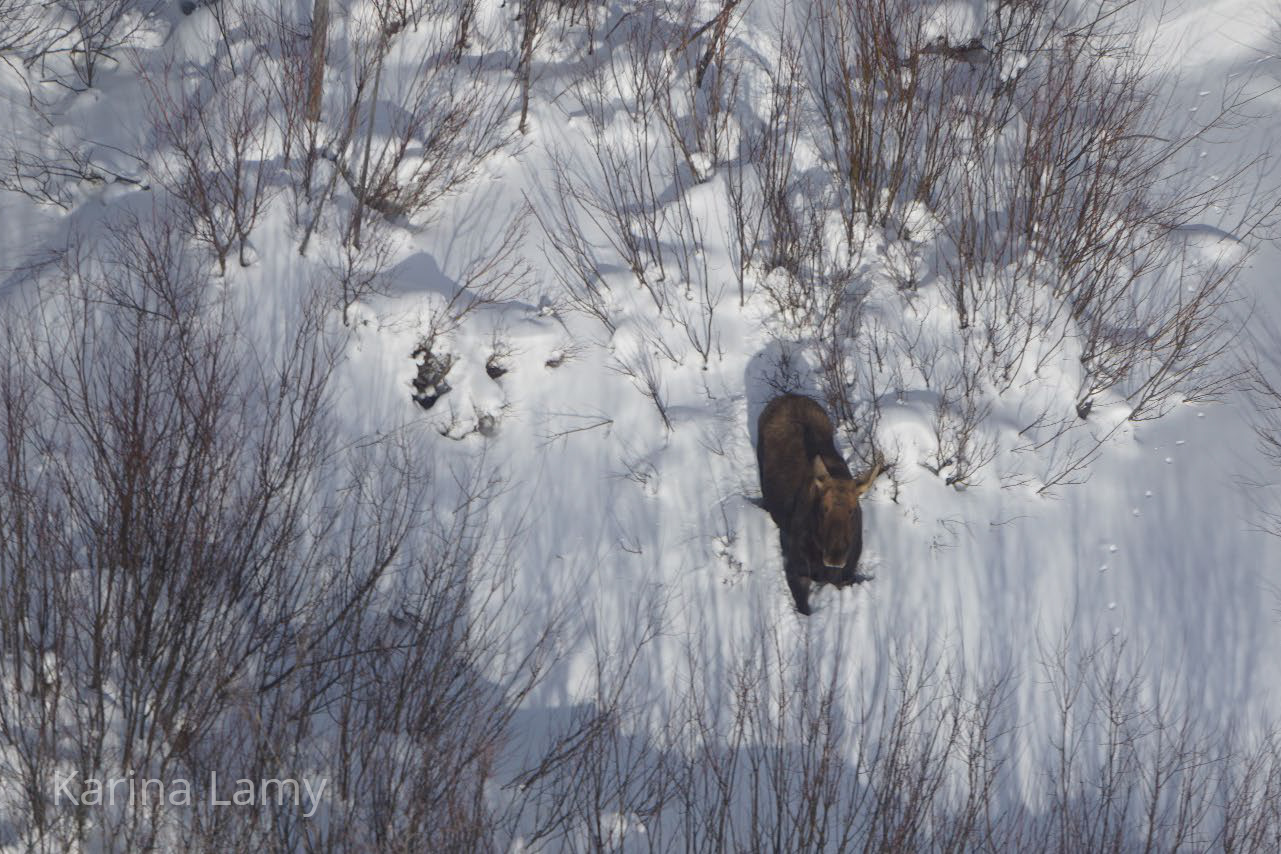Moose occur across the northern Boreal and Foothills of Alberta (Alces alces). Their core range is in mid- and west-central Alberta and supports the highest densities of moose in the province. The most recent provincial population estimate from 2014 is 115,000. However, in northern Alberta and British Columbia, local populations are thought to be in decline, and concern has been voiced about local population declines by First Nations and land managers.
Changes in the distribution of moose are driven by climate change, predation pressure, habitat change, recreational harvest, and disease. In British Columbia, although population limiting factors are known to be contributing to moose population declines, the specific mechanisms driving these declines are unknown. In the Boreal and Foothills of Alberta, there is less available knowledge of limiting factors and mechanisms that may be contributing to local declines.
Wildlife managers regulate moose populations through harvest and predator management, and to a lesser extent through habitat management. Although forestry does not regulate moose populations, forestry activities do change moose population dynamics through changes in habitat. Forestry is one of the dominant anthropogenic landscape driver changing habitats by design in Alberta’s Boreal forests, and there is potential to enhance moose-forestry co-management through improved forest planning and management practices.
This document reviews the current literature on moose, with a specific focus on the Foothills and Boreal regions of northern Alberta, specifically with a goal of identifying gaps in our knowledge in: Ecology, Monitoring Methods, and Response to Disturbance. These gaps were used to develop Future Directions that are meant to facilitate consultations and tabletop sessions with stakeholders, organizations, and individuals with the goal of identifying next steps and gathering local knowledge. Based on these knowledge gaps, we provide ten Future Directions with several recommendations to support forest planning and best management practices to benefit moose through the development of future research, partnerships, plans, and guidelines. Based on this literature review it is likely that moose could benefit most from future research informing the following topic areas:
- researching moose population sizes and trends;
- researching moose response to mountain pine beetle;
- developing industrial access management plans;
- improving herbicide BMP application strategies;
- enhancing the government Open Data Portal;
- partnering in observational winter tick surveillance;
- planning for climate resilient and connected forests;
- researching moose and moose browse response to operational and forest planning practices;
- considering landscape scale criteria in cumulative effects assessments; and
- innovating moose monitoring methods.
This literature review of moose ecology in Alberta was undertaken for West Fraser.







